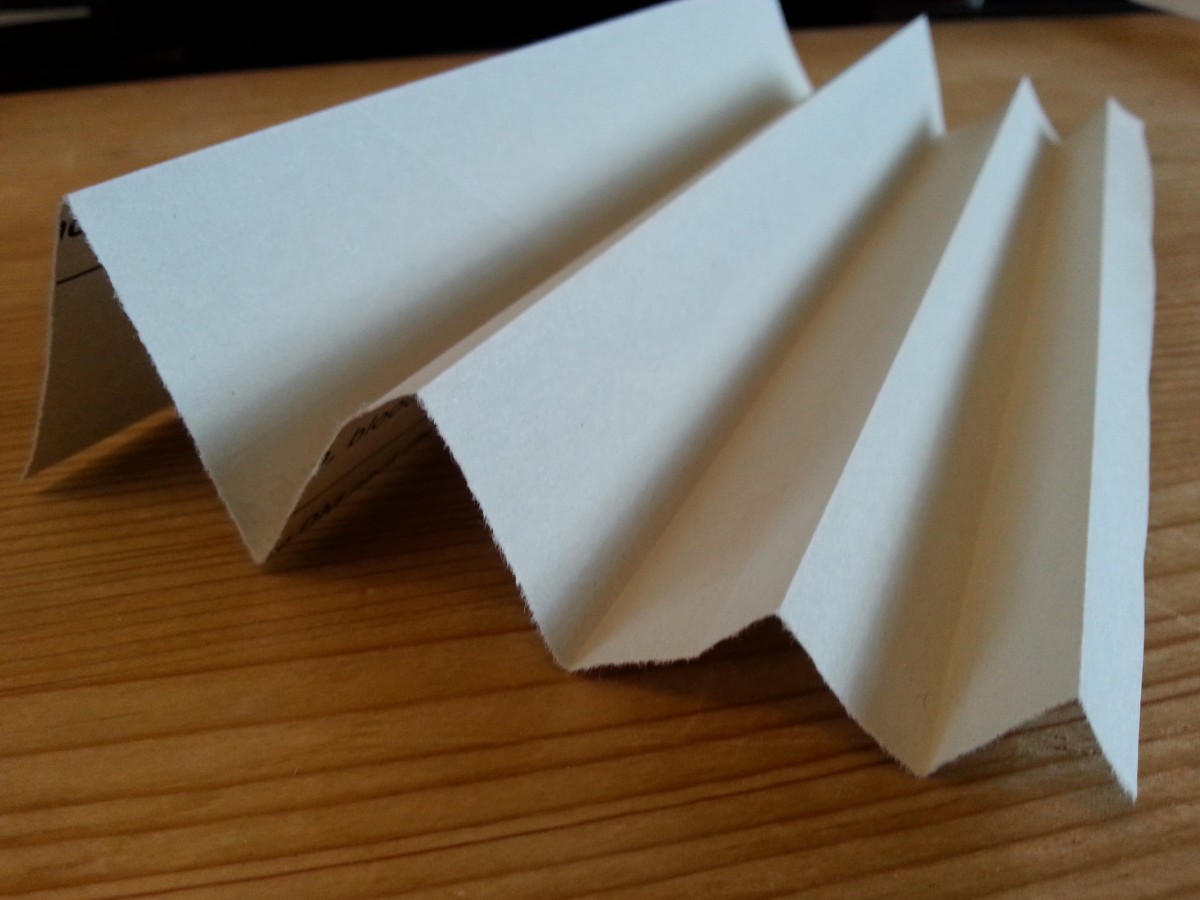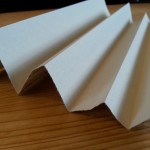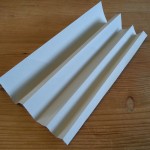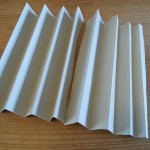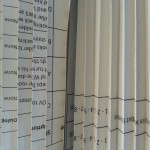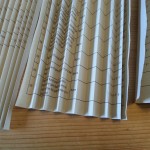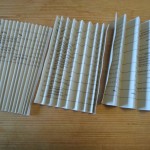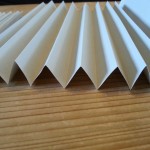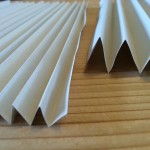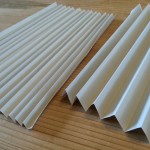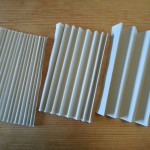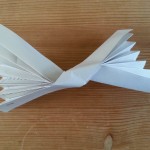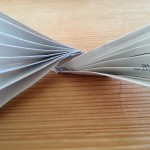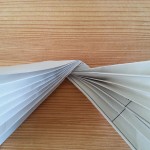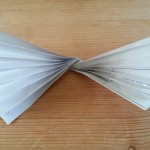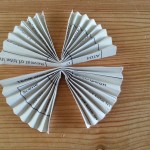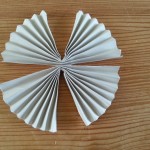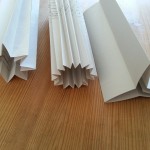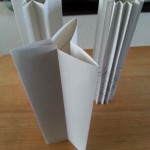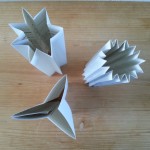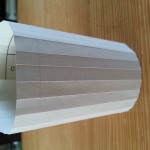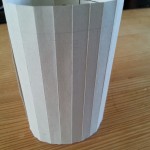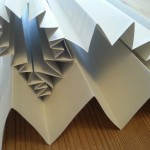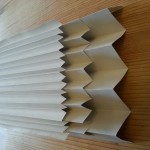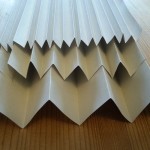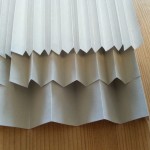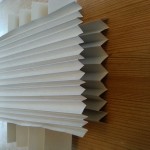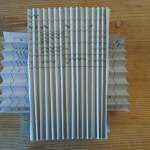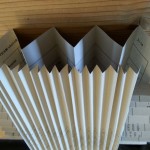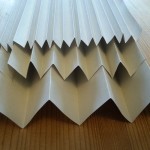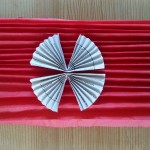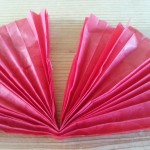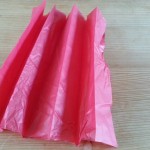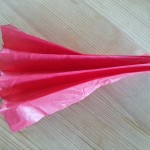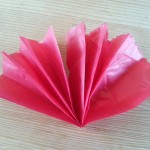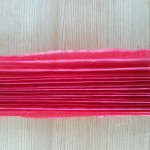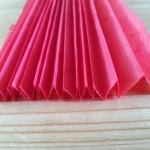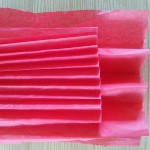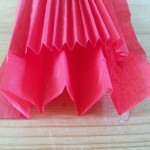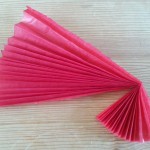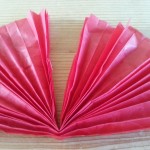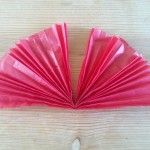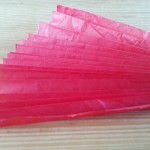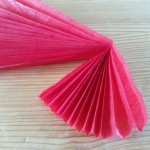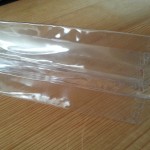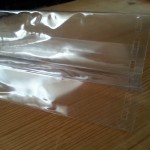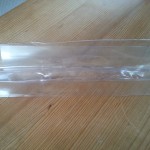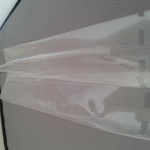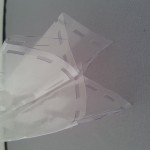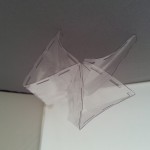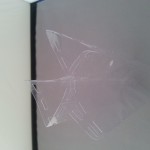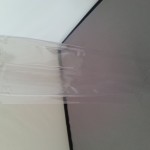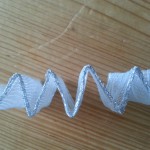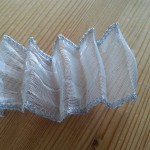Introduction
The purpose of this exercise is to explore the use of accordion pleats as a means of building texture, working first with paper, continuing to try folding other materials.
i) Simple pleats
This exercise was focussed around the effects achievable by folding papers. I began with simple, regular folds accordion pleats worked in A4 printed paper, re-purposed from printer paper -documents printed in error, over-printed, paper jams etc. I like the idea of re-purposing and re-using discarded materials to make something beautiful.
- A1-P1-Pr1-Exc1 Linear accordion pleats 21
- A1-P1-Pr1-Exc1 Linear accordion pleats 22
- A1-P1-Pr1-Exc1 Linear accordion pleats 23
- A1-P1-Pr1-Exc1 Linear accordion pleats 10
- A1-P1-Pr1-Exc1 Linear accordion pleats 5
- A1-P1-Pr1-Exc1 Linear accordion pleats 9
- A1-P1-Pr1-Exc1 Linear accordion pleats 4
- A1-P1-Pr1-Exc1 Linear accordion pleats 2
- A1-P1-Pr1-Exc1 Linear accordion pleats 3
- A1-P1-Pr1-Exc1 Linear accordion pleats 8
Thoughts and conclusions
The A4 paper gave good structure, holding the folds well with crisp, clear edges. It was interesting to photograph them from different angles to see how they catch the light, creating highlights and shadows that could be explored further in stitch or other media.
The printed pages produced interesting effects as the text lost its own identity and became more pattern than text.
ii) Combining pleats
I continued exploring the paper pieces, combining them to create new shapes and textures. Stacking, interlocking and layering different width folds, making tubular and vertical shapes. I also worked with twisting and fan-pleating.
- Twisted pleat
- Rotational accordion pleats
- A1-P1-Pr1-Exc1 Linear accordion pleats 27
- A1-P1-Pr1-Exc1 Linear accordion pleats 26
- A1-P1-Pr1-Exc1 Linear accordion pleats 24
- Box pleat 04
- Box pleat 03
- A1-P1-Pr1-Exc1 Linear accordion pleats 25
- A1-P1-Pr1-Exc1 Linear accordion pleats 20
- A1-P1-Pr1-Exc1 Linear accordion pleats 19
- A1-P1-Pr1-Exc1 Linear accordion pleats 18
- A1-P1-Pr1-Exc1 Linear accordion pleats 17
- A1-P1-Pr1-Exc1 Linear accordion pleats 16
- A1-P1-Pr1-Exc1 Linear accordion pleats 11
- A1-P1-Pr1-Exc1 Linear accordion pleats 12
- A1-P1-Pr1-Exc1 Linear accordion pleats 13
- A1-P1-Pr1-Exc1 Linear accordion pleats 15
Thoughts and conclusions
Photographing the pieces from varying angles again yielded interesting new shapes and patterns which I could see adapting readily into prints – perhaps linocuts or screenprints.
iii) Working with other materials – tissue
Next I tried tissue paper to see how the softer paper would hold the folds.
- A1-P1-Pr1-Exc1 Linear accordion pleats 34
- A1-P1-Pr1-Exc1 Linear accordion pleats 36
- A1-P1-Pr1-Exc1 Linear accordion pleats 30
- Incremental pleat 2.04
- Rotational accordion pleats
- A1-P1-Pr1-Exc1 Linear accordion pleats 29
- A1-P1-Pr1-Exc1 Linear accordion pleats 28
- A1-P1-Pr1-Exc1 Linear accordion pleats 33
- A1-P1-Pr1-Exc1 Linear accordion pleats 32
- Incremental pleat 2.01
Thoughts and conclusions
As anticipated the tissue didn’t hold the folds as well as the copier paper and was prone to tearing. It also creased, making it look untidy if over-worked. However, when folded into fan shapes the softness was advantageous as it held the shapes more readily without being as bulky.
iv) Working with other materials – acetate
This one proved to be more of a challenge! The acetate wouldn’t hold any folding, so Iironed it to melt the folds into place.
Thoughts and conclusions
Not the best result! The acetate did eventually hold some shape so I may try this with a thinner acetate, perhaps incorporating stitching to hold the shapes in place.
v) Working with other materials – wired metallic ribbon
I found some florist’s ribbon in a cupboard. It has a metallic mesh with a fine wire along the top and lower edge.
- A1-P1-Pr1-Exc1 Linear accordion pleats 51
- A1-P1-Pr1-Exc1 Linear accordion pleats 50
- A1-P1-Pr1-Exc1 Linear accordion pleats 49
Thoughts and conclusions
The wire was fine enough to hold the folds and there’s definitely scope to exploit this medium further. It would be interesting to add stitch or twist, fold and shape.
Future ideas
There are many ways that this experiment could be taken further. The use of the iron with the acetate would obviously lend itself to ironed pleats in fabric. Already “pleated” materials such as corrugated card would be interesting. Foils and different weights of card and many more.
